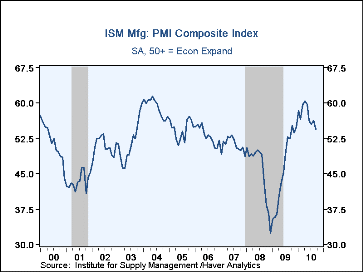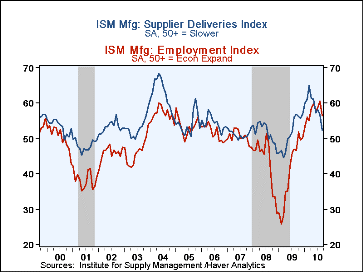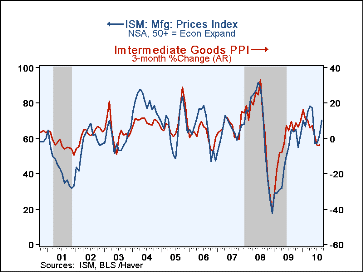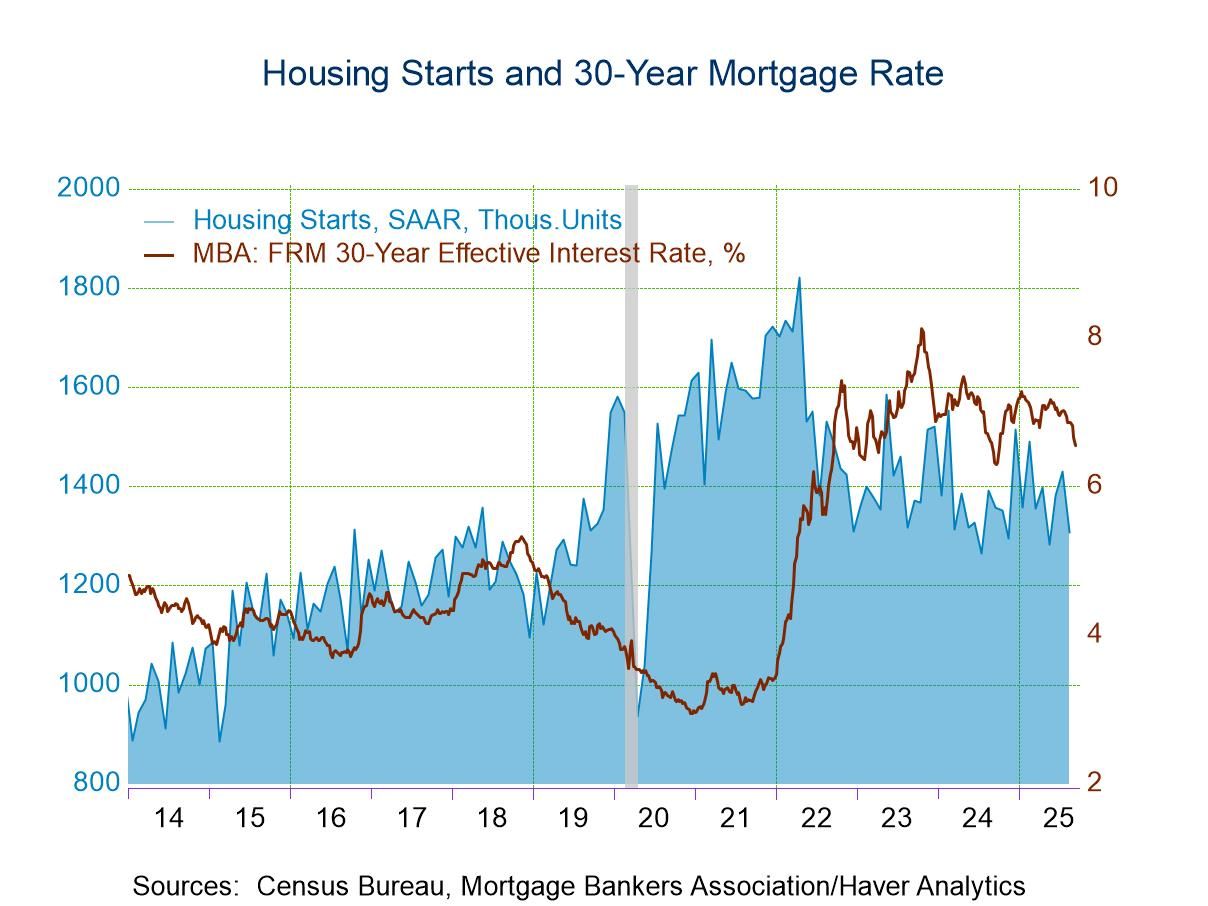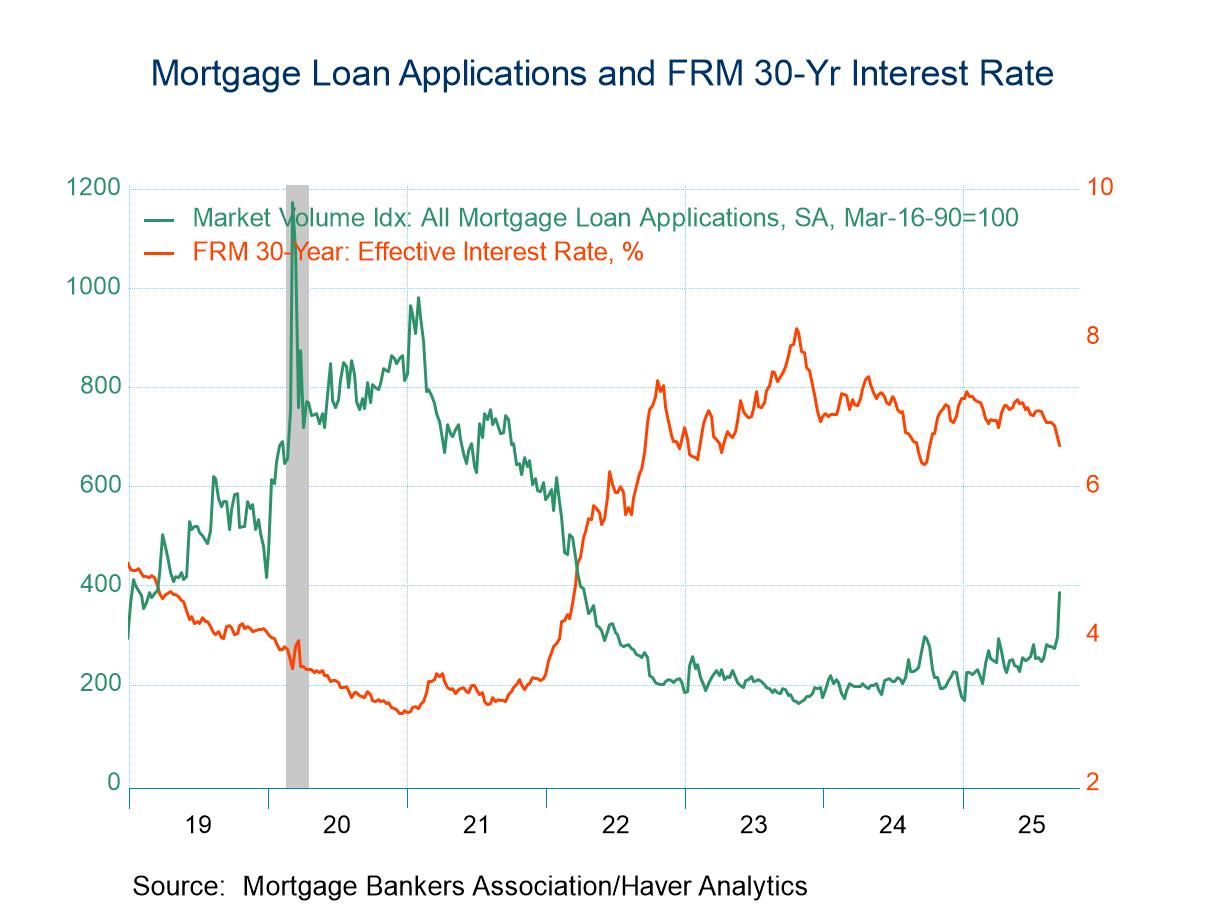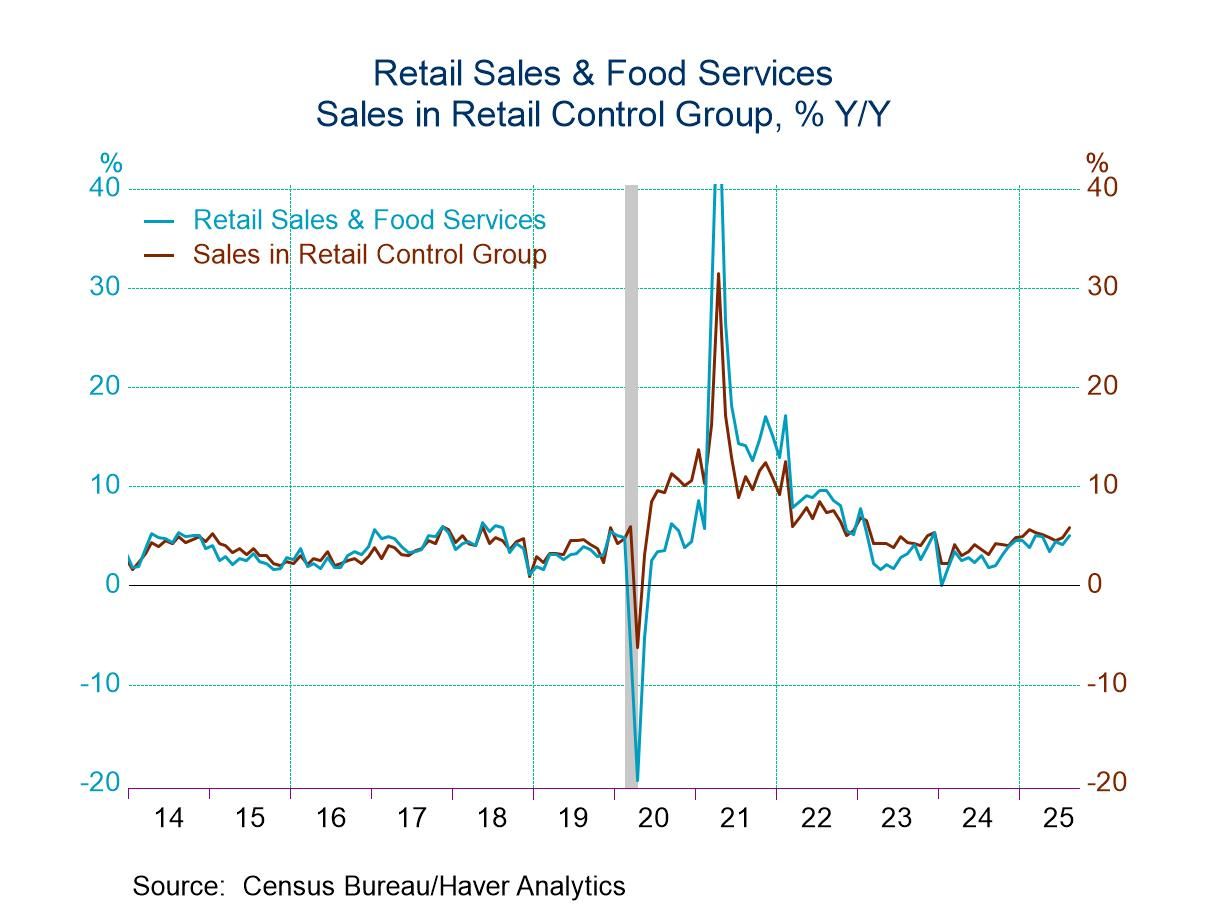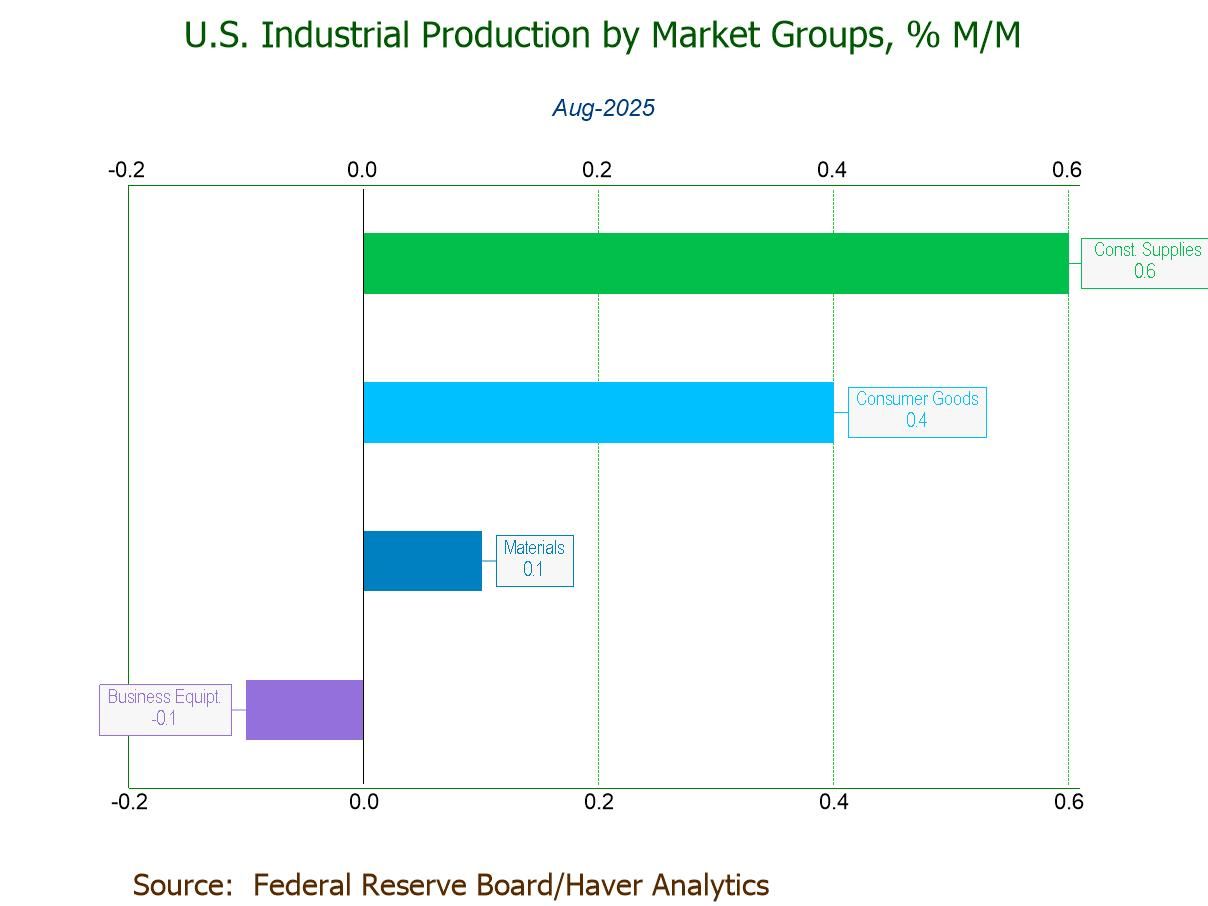 Global| Oct 01 2010
Global| Oct 01 2010ISM Index Falls To Lowest Since Last November As Pricing Firms
by:Tom Moeller
|in:Economy in Brief
Summary
Factory sector activity expanded moderately last month, though its rate of growth actually slipped from August. The September Composite Index from the Institute for Supply Management fell to 54.4 from 56.3 pulling the index to its [...]
Factory sector activity expanded moderately last month, though its rate of growth actually slipped from August. The September Composite Index from the Institute for Supply Management fell to 54.4 from 56.3 pulling the index to its lowest level since last November. The decline roughly matched Consensus expectations for a drop to 54.5. Nevertheless, the latest level was the fourteenth consecutive figure above 50 and was up from the low of 32.5 reached in December '08. (Any figure above the break-even point of 50 suggests rising activity.) The ISM data is available in Haver's USECON database.
A sharp 4.3 point drop in the supplier deliveries index led the September decline indicating faster delivery speeds and, thus, growing slack in the factory sector. The employment series also fell a sharp 3.9 points to 56.5 from its recent high in August. During the last ten years there has been an 89% correlation between the ISM employment index and the m/m change in factory sector payrolls. The new orders and production indexes followed with lesser m/m declines but the index levels were at their lowest since Q2 of last year. Offsetting these declines was a jump in the inventory index to its highest level since 1984, presumably reflecting involuntary accumulation.
Slowing activity abroad added to U.S. weakness. The export order index fell m/m to 54.5. That was down sharply from its May high of 62.0 and equaled the lowest level since December. During the last ten years there has been an 88% correlation between the level of the index and the quarterly change in merchandise exports. A greatly reduced nineteen percent of respondents reported higher export orders while ten percent reported orders lower.
The separate index of prices paid surged to 70.5, its highest level since May. It remained down from the April high of 78.0 but up from the December '08 low of 18.0. Forty-five percent of respondents reported higher prices while just four percent indicated lower prices. During the last twenty years there has been a 79% correlation between the price index and the three-month change in the PPI for intermediate goods.
The ISM data are available in Haver's USECON database
| ISM Mfg | September | August | July | Sept. '09 | 2009 | 2008 | 2007 |
|---|---|---|---|---|---|---|---|
| Composite Index | 54.4 | 56.3 | 55.5 | 52.4 | 46.2 | 45.5 | 51.1 |
| New Orders | 51.1 | 53.1 | 53.5 | 59.9 | 51.6 | 42.1 | 54.3 |
| Employment | 56.5 | 60.4 | 58.6 | 46.5 | 40.5 | 43.3 | 50.5 |
| Production | 56.5 | 59.9 | 57.0 | 57.5 | 50.4 | 45.2 | 54.1 |
| Supplier Deliveries | 52.3 | 56.6 | 58.3 | 56.8 | 51.4 | 51.6 | 51.2 |
| Inventories | 55.6 | 51.4 | 50.2 | 41.2 | 37.1 | 45.5 | 45.4 |
| Prices Paid Index (NSA) | 70.5 | 61.5 | 57.5 | 63.5 | 48.3 | 66.5 | 64.6 |
Tom Moeller
AuthorMore in Author Profile »Prior to joining Haver Analytics in 2000, Mr. Moeller worked as the Economist at Chancellor Capital Management from 1985 to 1999. There, he developed comprehensive economic forecasts and interpreted economic data for equity and fixed income portfolio managers. Also at Chancellor, Mr. Moeller worked as an equity analyst and was responsible for researching and rating companies in the economically sensitive automobile and housing industries for investment in Chancellor’s equity portfolio. Prior to joining Chancellor, Mr. Moeller was an Economist at Citibank from 1979 to 1984. He also analyzed pricing behavior in the metals industry for the Council on Wage and Price Stability in Washington, D.C. In 1999, Mr. Moeller received the award for most accurate forecast from the Forecasters' Club of New York. From 1990 to 1992 he was President of the New York Association for Business Economists. Mr. Moeller earned an M.B.A. in Finance from Fordham University, where he graduated in 1987. He holds a Bachelor of Arts in Economics from George Washington University.


